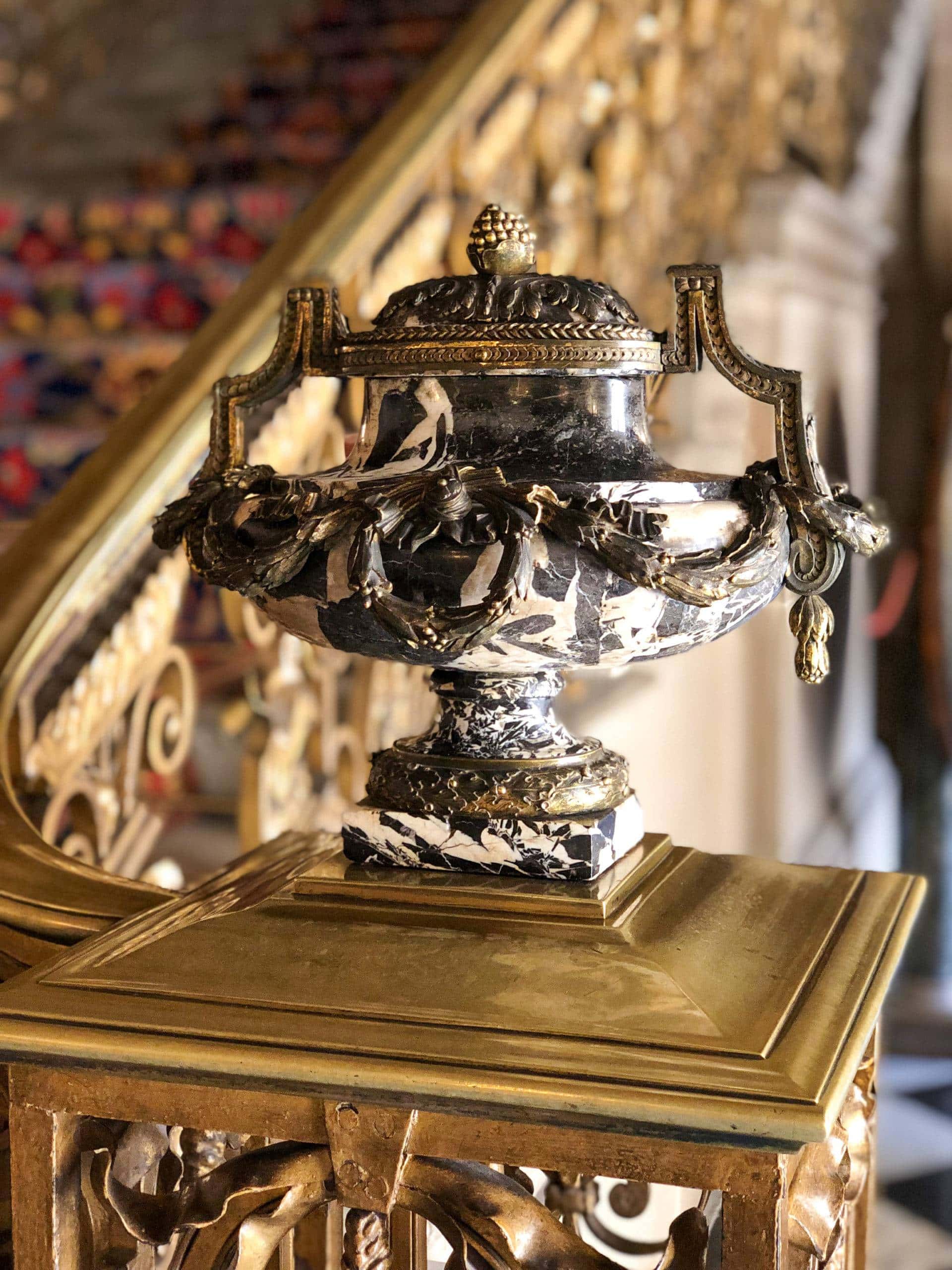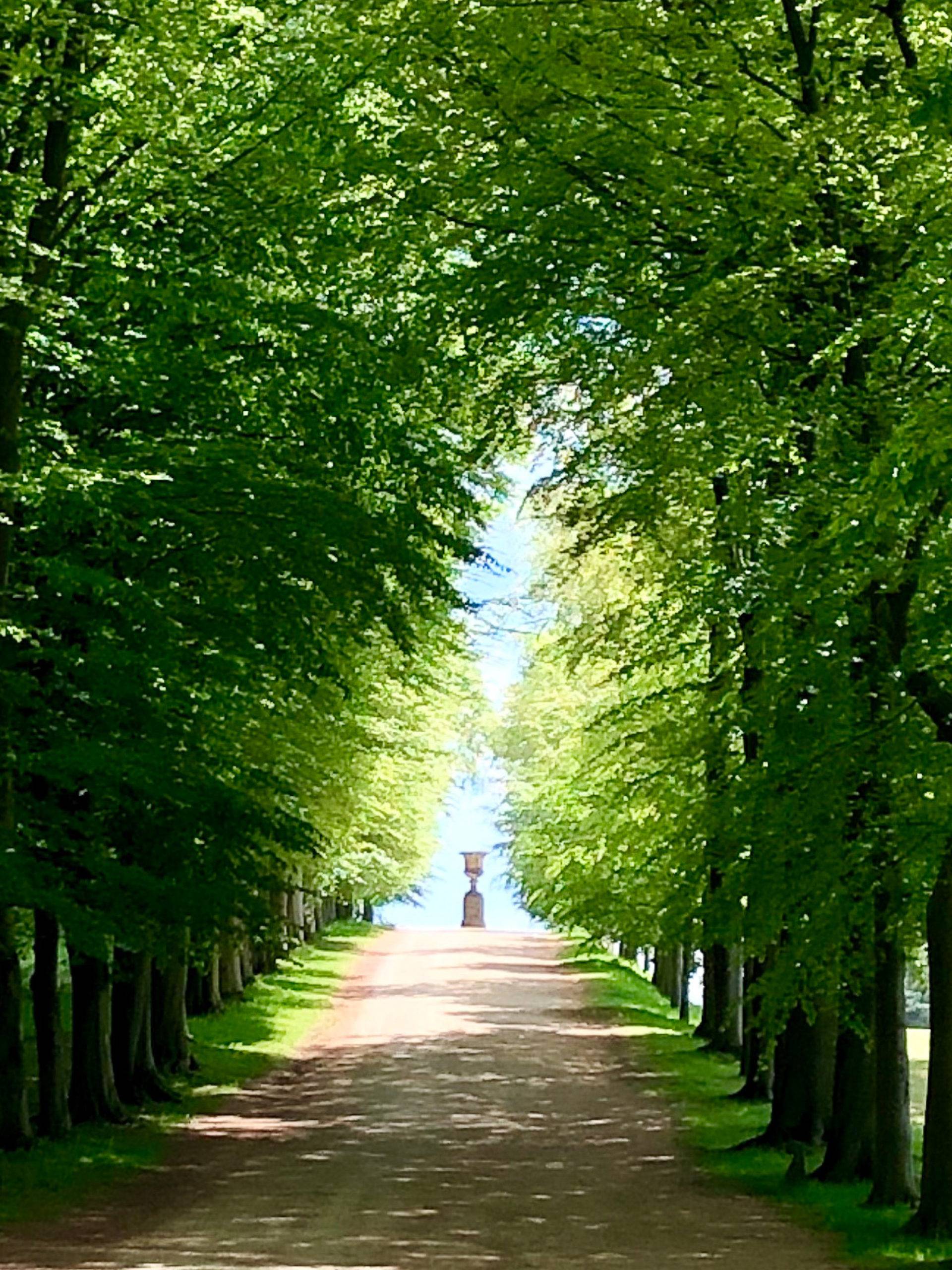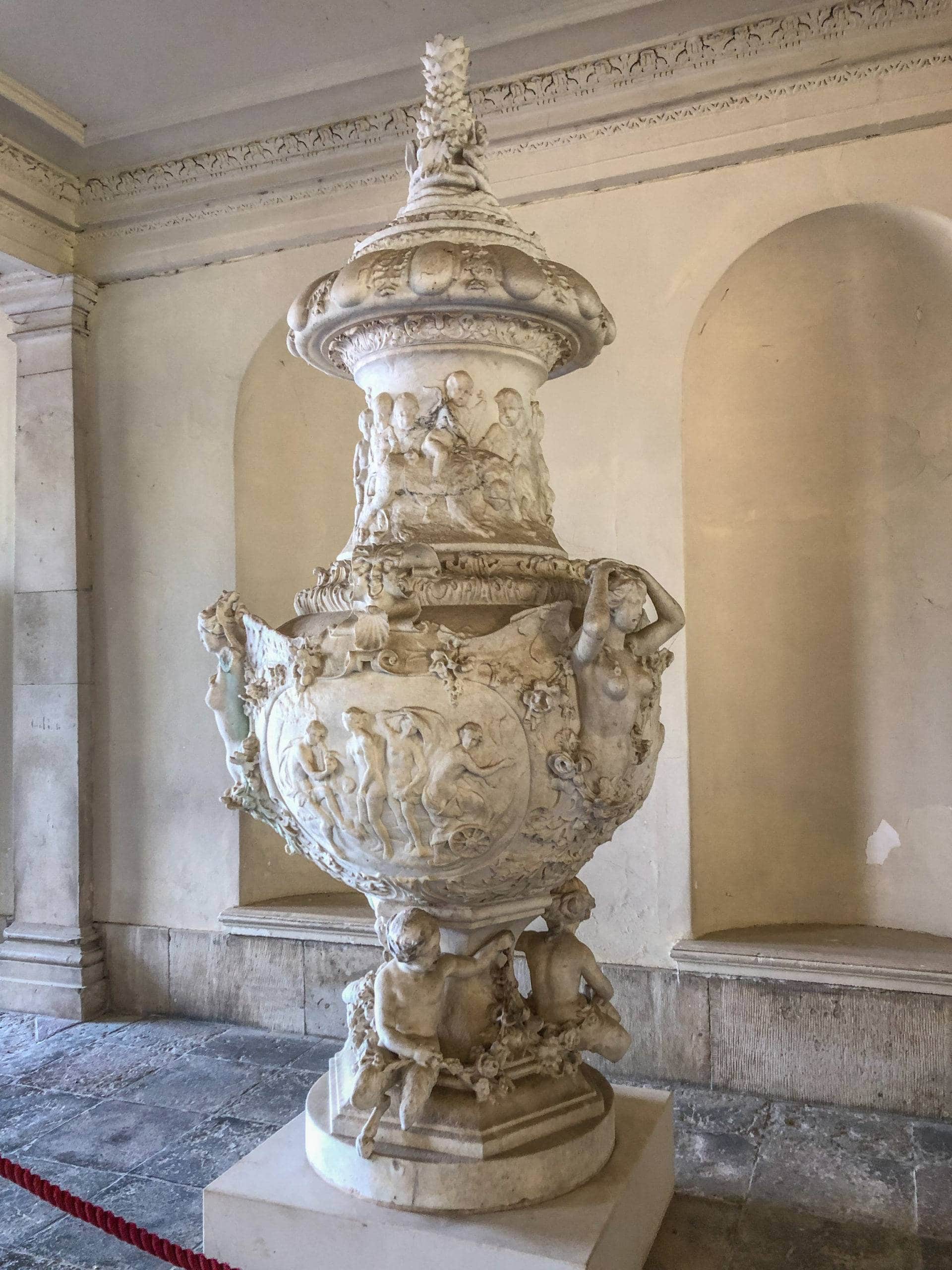Urns are containers that generally have a footed base and sculptural, bell-shaped curves that lead to a top opening. They might be lidded or have two handles. Decorative urns can be found outdoors as garden ornamentals with or without plantings in them and are typically made of stone, terra cotta, or marble with elaborate textural patterns and classical imagery. These can also be used inside, but indoor decorative urns are typically on a smaller scale and more likely made of materials such as porcelain, ceramic, or resin. To differentiate, I am not here discussing funerary urns that hold the ashes of the deceased, although their visual characteristics are very similar to decorative urns.
In my European travels, I’ve seen many beautiful decorative urns. Something about their shape and grandeur has always appealed to me. You can find them both indoors and out, decorating formal, traditional settings. Their look is classic and calls back to Greek and Roman antiquities. Decorative urns have been used across history but were a status symbol, particularly in the 1700’s into Victorian times when they were used in gardens to demonstrate wealth. Decorators of that era wanted to bring the natural outdoors into the home. They began using urns indoors as planters to bring sophisticated greenery to a room.
Here are some pictures I’ve taken of garden and decorative urns from English castles, manors, and estates:
Of particular note is an 18-foot-tall urn in the garden of Buckingham Palace in England, carved from a single piece of Carrara marble. Its history and scale are awe-inspiring.
These gorgeous English garden urns have inspired me to incorporate some into my garden planning. I have several sets of lightweight, urn-shaped garden ornamentals made of resin that I use as floral and greenery planters to frame the ends of walkways, delineate seating areas, and punctuate porches. You can also use urns as the base for small trees such as boxwoods, junipers, or arborvitaes to create sculptural topiaries. Small fruit or olive trees are also popular plantings for larger outdoor urns. Affordable stone-replica urns can be found online and at big-box garden centers. Unfortunately, I don’t have pictures of my outdoor urns to share, as obtaining plantings has been a slower process this year.
I do, however, have many examples of decorative urns used inside my home. Some of these urns are lamp bases; some have plantings; others are just decoratively placed on mantles, shelves, and sideboards. I might fill them with moss balls or faux florals and succulents. Some urn shapes appear in wood carvings and on tapestry pillows. I especially like to use matching urns to create symmetry, a standard traditional design feature, atop a fireplace mantle or a long table. Urns often appear on stone pedestals in old manor homes, but I’ve not yet used that formal of a presentation.
![]()
![]()
![]()
![]()
![]()
![]()
![]()
![]()
For more decorative urn inspiration, check out Grandeur on Grove’s Urns, Gates & Willows board on Pinterest. You’ll glimpse some of my inspiration for the use of urns in Grandeur on Grove’s logos. While you are there, follow all of Grandeur on Grove’s Pinterest boards.

























